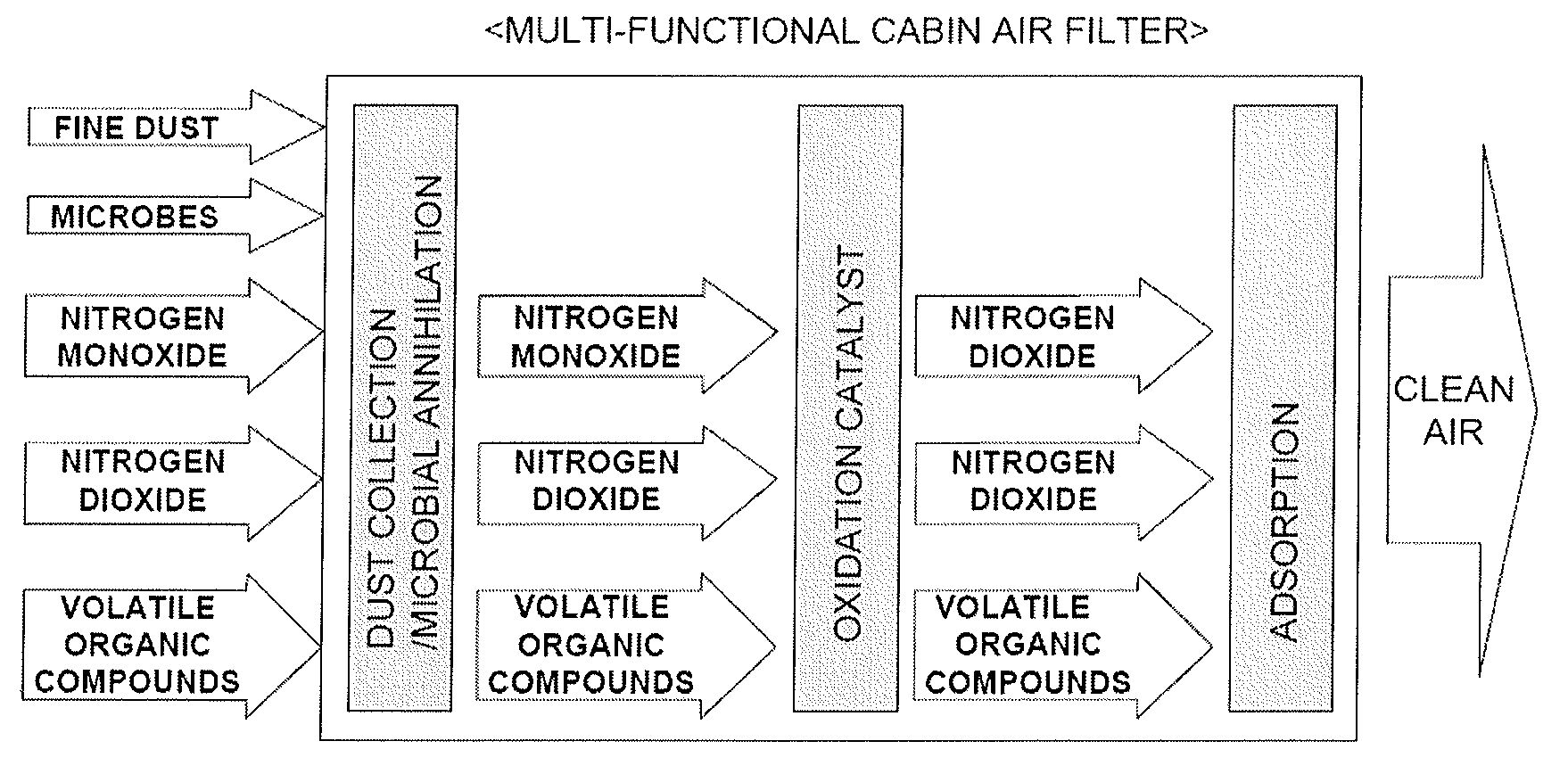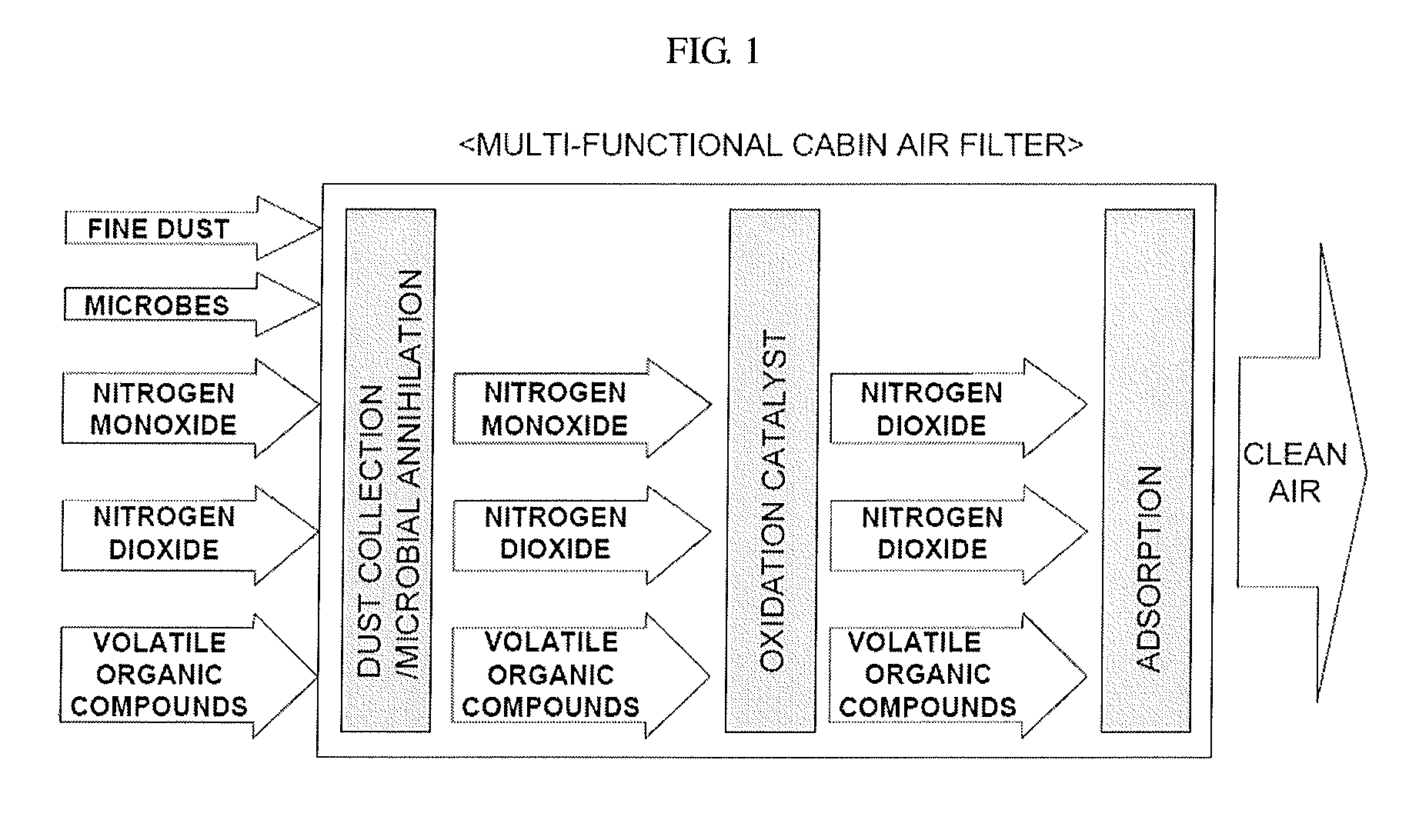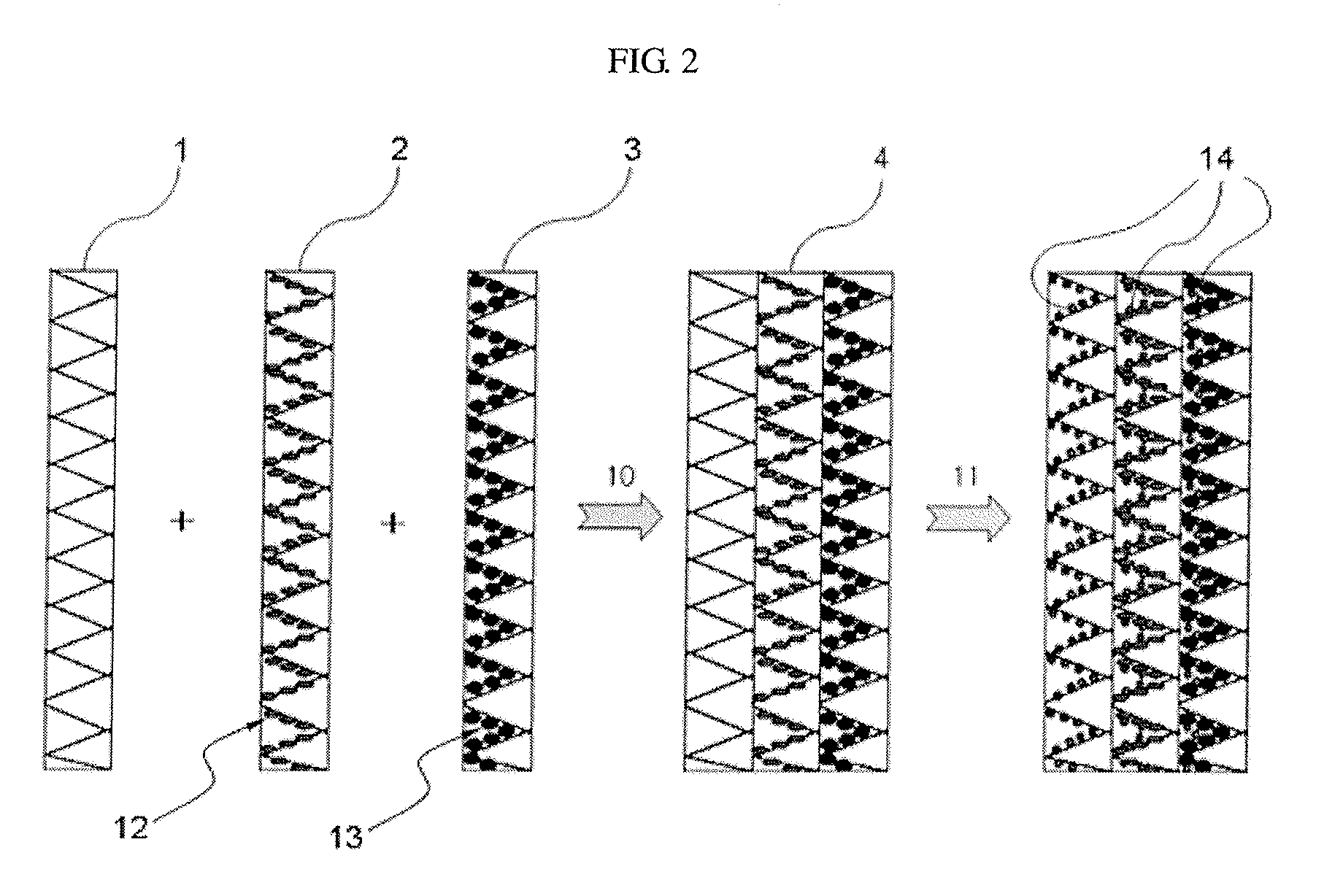Multi-functional cabin air filter
a cabin air filter and multi-functional technology, applied in the direction of metal/metal-oxide/metal-hydroxide catalyst, electrostatic separation, metal/metal-oxide/metal-hydroxide catalyst, etc., can solve the problem of air pollutants contaminating the indoor of the vehicle, deteriorating the antimicrobial function, and inappropriate antimicrobial function
- Summary
- Abstract
- Description
- Claims
- Application Information
AI Technical Summary
Problems solved by technology
Method used
Image
Examples
experimental example 1
Experiment for Measuring NO Oxidation Rate
[0041]The performance of catalyst used in the cabin air filter shown in FIG. 3 was tested. The used catalyst included 23 weight % of CuO, 69 weight % of MnO2 and 4 weight % of K2O. While injecting an air at a face velocity of 0.16 meters / sec (m / s), concentrations of NO and NO2 were measured at the upstream and downstream of the catalyst layer, respectively. Also, at the point that 150 seconds passed from the measurement of concentration, NO gas was injected. The experimental results of NO and NO2 concentrations are shown in FIG. 4.
[0042]Referring to FIG. 4, the concentration of NO measured at the upstream of the catalyst layer was 700˜800 parts per billion (ppb). After about 760 seconds, the measurement position was changed from the upstream to the downstream of the catalyst layer. The concentration of NO was decreased to about 300˜350 ppb at the downstream of the catalyst layer. Also, a concentration of NO2 was increased as much as the decr...
experimental example 2
Experiment for Measuring Absorption Performance of Volatile Organic Compounds
[0043]For the cabin air filter shown in FIG. 3, adsorption performances of volatile organic compounds such as toluene, benzene, ethylbenzene and xylene were tested. In detail, when a test gas in which the concentration of toluene, benzene, ethylbenzene and meta (m-), para (p-) and ortho- (o-)xylene, respectively, was about 800 ppb passed at a face velocity of 0.8 m / s, those concentrations were measured at the upstream and downstream of the cabin air filter, respectively. The experimental results of adsorption efficiencies are shown in FIG. 5.
[0044]Referring to FIG. 5, it would be understood that the cabin air filter disclosed herein removes toluene, benzene, ethylbenzene and xylene at an efficiency of 80 to 86%.
experimental example 3
Antimicrobial Test
[0045]For the dust collecting filter media, antimicrobial performances in case silver nanoparticles are applied and in case silver nanoparticles are not applied were measured and compared with each other. For this experiment, microbes were aerosolized into the air and collected on the surface of the dust collecting filter media, and then the dust collecting filter media was put into a liquid medium and shaken therein. After that, the dust collecting filter media was taken out of the liquid medium, and then microbes in the liquid medium were cultivated for 64 hours. During the cultivating process, an optical density of the liquid medium was measured with time to check whether the microbes were proliferated. The experimental results of optical density are shown in FIG. 6.
[0046]Referring to FIG. 6, in case of general dust collecting filter media not deposited with silver nanoparticles, the optical density was obviously increased due to the proliferation of microbes. H...
PUM
| Property | Measurement | Unit |
|---|---|---|
| size | aaaaa | aaaaa |
| size | aaaaa | aaaaa |
| velocity | aaaaa | aaaaa |
Abstract
Description
Claims
Application Information
 Login to View More
Login to View More - R&D
- Intellectual Property
- Life Sciences
- Materials
- Tech Scout
- Unparalleled Data Quality
- Higher Quality Content
- 60% Fewer Hallucinations
Browse by: Latest US Patents, China's latest patents, Technical Efficacy Thesaurus, Application Domain, Technology Topic, Popular Technical Reports.
© 2025 PatSnap. All rights reserved.Legal|Privacy policy|Modern Slavery Act Transparency Statement|Sitemap|About US| Contact US: help@patsnap.com



